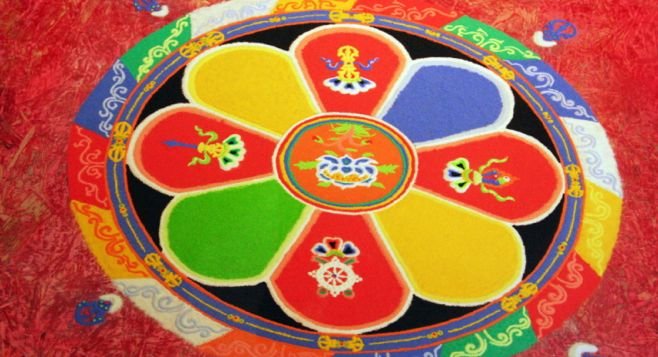 Facebook
Facebook
 X
X
 Instagram
Instagram
 TikTok
TikTok
 Youtube
Youtube

She shines upon the white lotus arisen from the water, pervading the world. She holds in her hands scissors, a sword, a skull and a blue lotus. Her ornaments are snakes in the form of a zone, earrings, a garland, armlets, bracelets, anklets. She has three red eyes, fearful tawny tresses, a beautiful girdle, fearful teeth. Round the hips she wears the skin of a panther. She bears a diadem made of bleached bones. Once should meditate on Tara, the mother of the three worlds seated on the heart of a corpse, her face resplendent with the power of the Never-decaying.
— from the Tara Tantra (trans. Alain Danielou)
The Tantras are a series of contemplative Hindu scriptures composed in the 7th and 8th centuries which serve as textbooks for that religion’s devotions and customs. The word “tantra” is derived from two Sanskrit words — “tanoti” (expansion) and “trayati” (liberation) and refers to the desired effect of the text — to liberate energy and expand the mind. There are 92 Hindu Tantras which are divided into three classes — those without differentiation, those with and without differentiation and those with differentiation. The Tara-Tantra relates to the devotion and mythology of Tara, one of the manifestations of the Supreme Female Divinity of Hinduism.


She shines upon the white lotus arisen from the water, pervading the world. She holds in her hands scissors, a sword, a skull and a blue lotus. Her ornaments are snakes in the form of a zone, earrings, a garland, armlets, bracelets, anklets. She has three red eyes, fearful tawny tresses, a beautiful girdle, fearful teeth. Round the hips she wears the skin of a panther. She bears a diadem made of bleached bones. Once should meditate on Tara, the mother of the three worlds seated on the heart of a corpse, her face resplendent with the power of the Never-decaying.
— from the Tara Tantra (trans. Alain Danielou)
The Tantras are a series of contemplative Hindu scriptures composed in the 7th and 8th centuries which serve as textbooks for that religion’s devotions and customs. The word “tantra” is derived from two Sanskrit words — “tanoti” (expansion) and “trayati” (liberation) and refers to the desired effect of the text — to liberate energy and expand the mind. There are 92 Hindu Tantras which are divided into three classes — those without differentiation, those with and without differentiation and those with differentiation. The Tara-Tantra relates to the devotion and mythology of Tara, one of the manifestations of the Supreme Female Divinity of Hinduism.